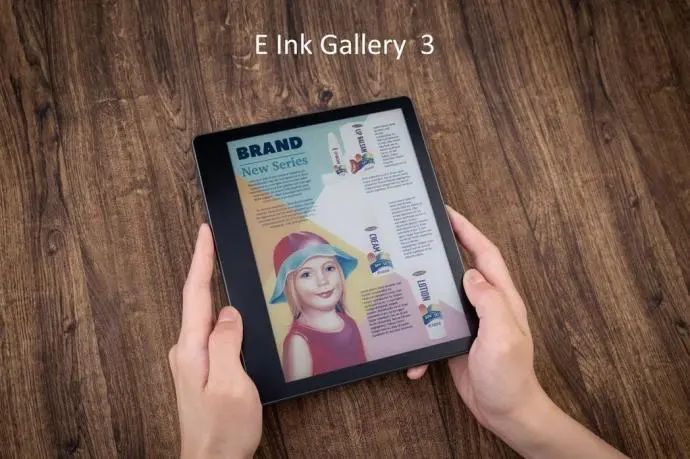
I have been around eReader and Eink for many years now. To give you an idea, I remember Eink demonstrating me a 4 pixels Black and White sample panel 22 years ago !
Since then, Eink mass produced hundreds of millions of panels principally for one type of usage : reading text. In fact, Eink remains a unique case in display industry, dominating a whole segment as the best and basically sole screen you can read on for hours without eyestrain.
Let’s first understand the underlying principle
Technically, Eink uses a bistable electrophoretic technology in their panels. The idea is to move up and down pigments inside tiny transparent capsules stacked together to make a film. This film is laminated (stuck) on a network of tiny transistors (classical TFT backplane) which drive pigments toward the surface to draw stuff. Once moved, the pigments remain where they are (top or bottom position – bistable) and don’t need energy to stay there. Once drawn, your image stays still like a print on a page.
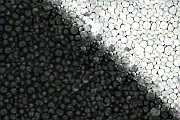
Eink panels need only power to draw new stuff, don’t flicker and are fully reflective like a sheet of paper. Add on top, an anti-glare treatment together with a very high-resolution transistor network (300 dots per inch) and you obtain an electronic sheet of paper.
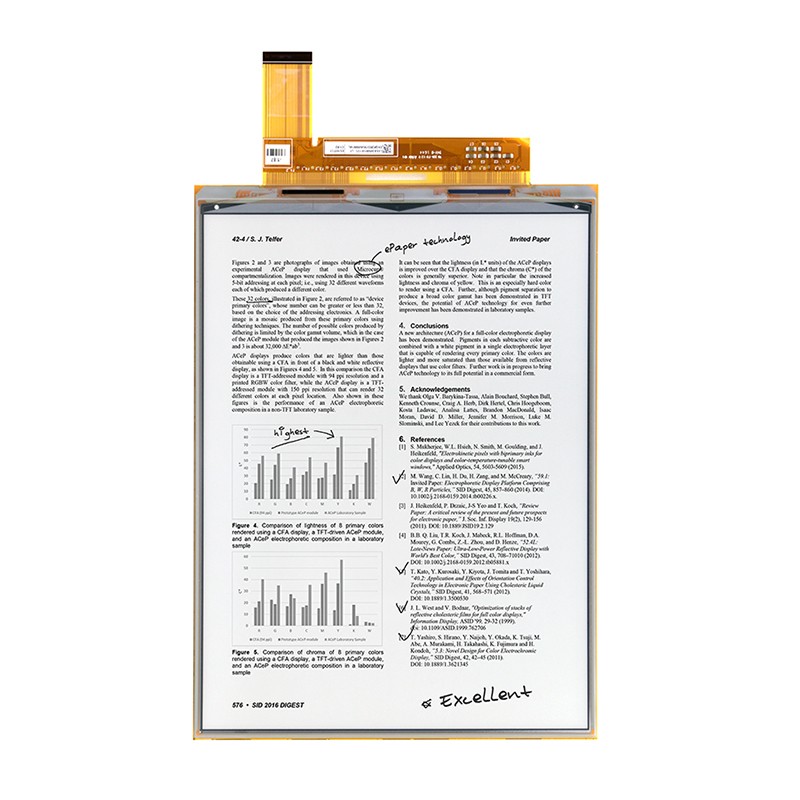
One question though : why are pigments moving ? They move because they carry a positve or a negative charge. The transistor enables an electrostatic field (volatge difference between two surfaces) which will drag up or down the charges and thus the pigments according to the field direction. The system seems pretty simple but reduces considerably the possibilities as 2 charges = 2 pigments which explains why Eink panels are intrinsically Black and White.
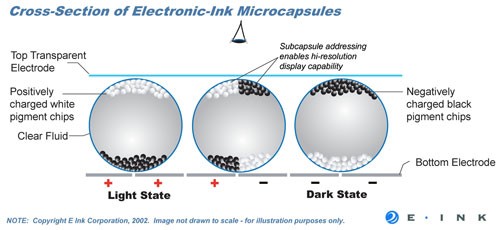
So here we are, 22 years later, Eink improved contrast, speed, resolution but screens are still black and white like this very first sample.
Don’t get me wrong, Eink knows that becoming a true mass-market solution requires colour. First and foremost, because of the competition from LCD and OLED screens used in tablet/smartphone but also because undoubtedly customer wants it ! For almost 10 years, Eink has claimed, almost every year, having reached the colour Grail. Everybody believed it and like in « Peter and the wolf » story, nobody paid attention anymore. However this time, the wolf really got his way through and here is why !
Let’s try to understand why Eink previous shots to colour did not work.
Let’s think about it, how can you make colours out of two possibilities, either pixel is white (ON), either pixel is black (OFF)? This problem has been solved long time ago on LCD panels and their RGB pixels. Just take three contiguous pixels, add a red filter, a blue filter and a green filter above one of each and makes this trio your new super coloured pixel. For example, if you want to display red, switch on the first « subpixel » and switch off the others (R,G,B) = (1,0,0). This technique works remarkably well for LCD and OLED display.
It works very well for one good reason : brightness. LCD and OLED emits a lot light while Eink reflects only part of ambient lighting (this is why it’s so easy on the eyes). Add a filter, switch off (display black) part of the pixels and your brightness decrease drastically. In case of Eink, your paperlike screen becomes necessarily very dark as it uses filters. Eink tried to inject light (using a frontlight solution) or add a fourth white pixel to bring back some brightness but in vain, the filter solution was intrinsically doomed.
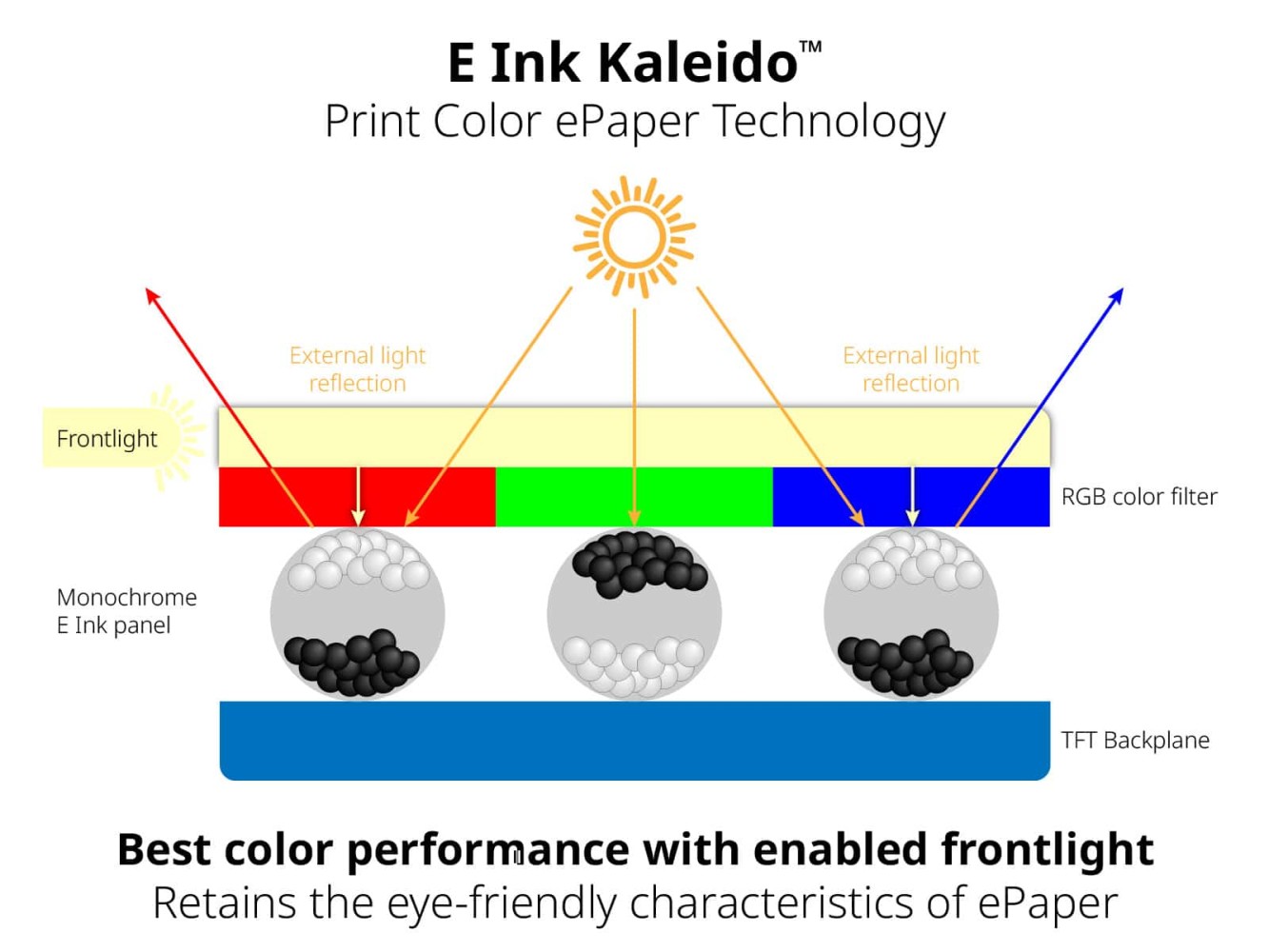
Two years ago, a out-of-the-box idea emerged : what if it was possible to use more than two pigments ?
The first question would be then how to move one specific pigment/color inside this tiny capsule knowing that we have only two possible charges + or – ? The answer relied on the velocity of each pigment which depends on its size and charge value. To summarize, several pigments will move at the same time but not at the same speed. The driving process becomes thus much longer and much more complex. Thus when first models appeared few years ago, while the image quality was impressive, the refresh rate was of 25 seconds. The die seemed to be cast !
But this year, out of the blue, Eink announced to have reduced this delay to 1.5 seconds (which was the delay of the first mass-market eReaders in 2006) and even 350ms in a less qualitative mode. We have to greet this technical breakthrough, Eink has done an incredible leap forward in a very short amount of time. Undoubtedly, the wolf is here and colour on Eink has, at last, become a reality!
A new era has just started for e-paper !
With this quality, Eink is on the verge to grow their market size tremendously. With concern about paper consumption worldwide, high stakes in education, magazine/press issues and power consumption in general, Eink has now great chances to become the true alternative to paper it always dreamt to be !
Congrats Eink Team you finally did it !
